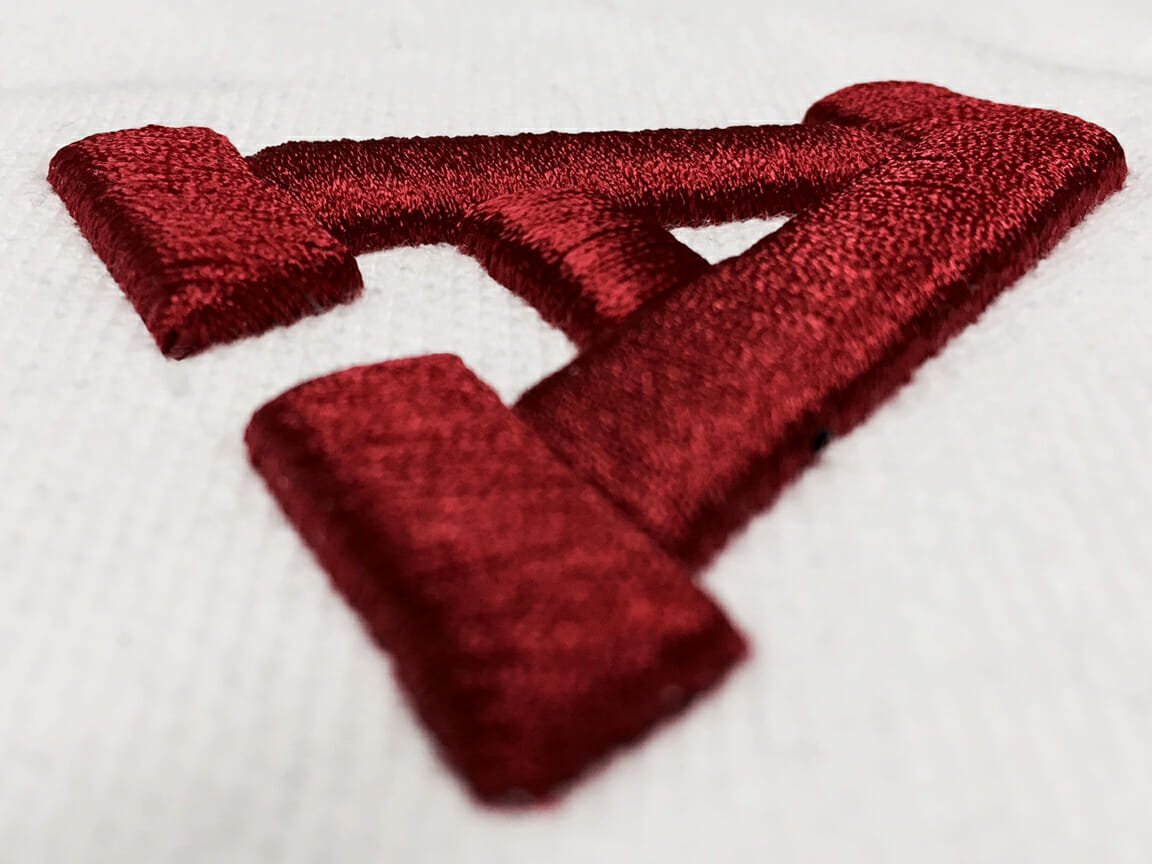
With over twenty five years in the decorated apparel industry, I’ve spoken with all sorts of folks from shops in every corner of the country. A good many have a lot of things worked out, and they are usually at the top of the food chain in their market niches. Some are just ridiculously bad business people or ineffective at managing their processes in their shops.
It’s as simple as connecting the dots. A connects B. If you don’t do A right, B isn’t going to work well.
We are all blinded by orders that have to ship. That’s the number one excuse that I always hear when I’m asking “why don’t you do something about your problem?”. People just don’t stop and think that if they solved for A better; B wouldn’t be such a headache.
Ok, so what the hell am I talking about now? Let’s take a look at four super common problems. These are in no particular order or ranking…but in your shop one could be more impactful than another. Do any of these sound familiar?
The Importance of a Well Run Screen Room
What’s the number one problem in screen-printing? Art? Ink? Shirts? Equipment? Nope, none of these.
Sorry, but the keystone to the whole operation is your screen room. You know, that dirty dungeon that you ignore and send your worst employees to toil away in relative unsupervision. Just about all problems on press can be tracked down to screen issues. Dirty screens, pinholes, tension, emulsion coating, moiré, under or overexposure…the list goes on.
I don’t know why, but when I go to shops or speak to their owners/managers and discuss their particular production challenges it turns out they all ignore this crucial part of their operation. Everyone is always focused on the print. Presses, ink, the art, shirt fabric type…that’s the discussion everyone dwells on. Screen reclaim or coating? Tension? Even choosing the right mesh count for the job?
Not so much. It’s the dirty dark secret.
Each step in the screen making process has to be dialed in perfectly in order to have success with printing on any press. Don’t do a good job with one of these steps? Good luck trying to print. That registration problem you are having? It’s not in the art. It’s the fact that your screen is only at twelve newtons. The back screen door to your house is tighter.
Stretching, reclaiming, dehazing, coating, imaging, exposing, washing, and quality control prep for printing. All are crucial. Everything needs to be ready for your production team so that when they reach for the screen for that job, it’s sitting there waiting for them. Perfect every time.
How do you get to that level of execution? Easy. Your screen room needs controls. Cleanliness. Organization. Timing. Basically it’s about setting yourself up for success by installing some manufacturing principles. If you think of your screen room as an assembly line, what do you need to install to make each part of the line perfect every time? You don’t see Toyota slacking.
When you staff your screen room with malcontents and misfits do you think you are going to see the final product you want? It’s a thankless job and similar to doing the dishes forever. What your company should strive for is dedicated, skilled, craftsmanship oriented people working in the area. They need to know that their effort is a major part of the success of the company.
Think about your shop. Is that how you view it?
Do you stress the importance of craftsmanship in your screen room? Does your staff think about how important they are to the operation or are they seen as basically one step below the janitor in the pecking order?
Where is the respect?
Want better success in your shop? Train and man the screen room with better employees and give them the support they need to run the department well. Before you start adding more autos to your shop, think about updating and automating the equipment in the screen room to keep up.
Auto-coaters are essential for precise coating. Get the model that can handle two at once. While they working your employee can be doing something else. Multi-tasking = efficiency.
If you are burning more than fifty screens a day, look to getting an Computer to Screen imaging system. Yep, they are expensive. However, you are already spending the money with film, labor and film storage work. Replace all that and go digital. Track your labor and expenses for a month and do the math. Maybe it will make sense for your shop. Maybe it won’t, but the benefit will be better screens, no pinholes, no filing films ever again, and pre-registered screens for your press – which makes things easier on the production floor. Can’t afford top of the line new? Look for used ones, especially now as a lot of shops are upgrading to M&R’s new STE LED model. That unit is a game changer.
Find an emulsion that works well for your purpose and use a step wedge exposure calculator test to dial in the exposure time. It’s crucial that you do this step. Yes, it’s like homework. You have to do the math to achieve the results you desire though. Guessing just doesn’t work so well it turns out.
Make sure you properly rinse your screens too. Sometimes you can’t just power wash them either. Train your staff that a few patient moments with a hose can save you from having to redo the screen when you blow out the details in a halftone or fine line with your pressure washer that’s set to the fire hose setting. There is craftsmanship needed in every job evidently.
Finally, while nobody likes to be the guy that cleans the screens after they are layered in ink, this is incredibly important step. Make sure your printers do their part and card as much of the excess ink off the screen as possible before sending it in for reclaim. This includes getting the ink all around the frames. If they don’t, give them a day or two cleaning screens and they will quickly understand that you can’t leave a mess for someone else.
Whether you just use a dip tank, hand-wash system, or auto cleaning machine…make sure the screens are perfectly clean, free from grease or haze, dry and ready to coat. Quality has to come first here, as a clean screen is the foundation for everything to follow.
For screen-print production, that’s solving for A.
Ink Don’t Think
For a lot of shops, problems on press are all blamed on the ink. It’s probably the number one scapegoat. While it’s true, some ink is better than others and some ink is formulated to solve a particular challenge, often the issues on press you are having aren’t the ink at all, but instead other factors in your shop. Usually it’s your people.
Matching a Pantone color perfectly is a skill you should have in your toolbox. On any color shirt, or any color underbase. No excuses. Every single time.
There are ink mixing systems out there that use a formulaic approach to color. Take a base, apply pigments in grams, mix it up, and you have perfectly mixed and matched PMS colors. If you are careful with your amounts of pigments you load into the base, you can mix any PMS color in under five minutes by hand. No guessing needed. Just get a good digital scale and the right ink system and you are in business.
Other things can have an influence on ink. Heat paired with synthetic fabrics being the main culprit.
The first t-shirt maker that develops a dyed polyester fabric that isn’t sensitive to heat will own the market. (Are you listening manufacturers?) How many red shirts do you think they would sell if the dye didn’t migrate up through the ink ever?
Some environmental factors can influence your print as well. Heat and humidity being the biggest concerns. There can be a big difference on press with the same bucket of ink when the shop temp is fifty degrees versus when it is ninety-five. Sometimes a quick bucket stir before loading the ink into the screen can make all the difference in the viscosity.
Then there’s the mechanical factors with the print. Squeegee durometer, print speed, blade angle, pressure, mesh count, even the off-contact from the screen to the platen can influence your print either in an positive or negative way.
All still not the bucket of ink’s fault.
Has your printer ever had a new bucket of ink mixed because the final print didn’t match the right Pantone color on the print? That bucket of ink could be $50 sitting there. Not to mention the cost of mixing a new one. Before you get to that step and blame the ink, look to other factors to see if something could be causing your hue challenge.
How well trained is your print staff on this subject? Trust me, you can always do more. With the crazy amount of variables we see every day in the shop with the art, fabrics, shirt colors and different scenarios on orders you probably won’t ever stop training. Keep talking about it with your crews.
Solving for A with how ink actually performs in your shop can go a long way towards making B better.
It Is About Your People
Your employees are the heart of your company. I’m a guy, so naturally I like to explain things in sports metaphors. If you think about your company as a sports team, your job is to field the best team you can find and score as many points as possible every day. Every order you ship on time with quality is a touchdown. Every returning customer is a home run.
That guy or girl that just isn’t working out? Find a replacement as quickly as possible and substitute. Don’t wait. Do it today. Varsity players only get to play.
The quality of the product from your company is directly proportionate to the quality and efficiency of the work being performed daily. Want world class production orders shipping daily from your company? Hire and train your staff to be world class experts in the work that they perform daily. That’s your job. Assembling and coaching the team.
Make sure that you have an effective cross training program, so that you can redeploy your labor at a moment’s notice to solve a problem. Machine operator or purchasing person call in sick? Someone better know their job! This is called bench strength.
At trade shows when I’m teaching a class I always ask “What’s your number one problem you are trying to solve?” Historically the answer is always “where do we find printers?” A lot of shops constantly struggle with this challenge. I can see your head nodding in agreement.
Good, well-trained printers (or embroiderers for that matter) are already employed. Most like their jobs and aren’t going anywhere unless you throw money at them to move. A better solution is to grow your own with the staff you have. Look for and hire people with great attitudes that want to learn and grow. It is the character of the person more than anything that makes a good hire.
Everyone needs to know the whatever you consider the basics for your shop. How to pull a printed shirt off of an automatic press, catch at the end of the dryer, how to trim an embroidery job, how to mix ink, burn a screen, hoop a shirt, count in inventory in receiving, or polybag a shirt. People that master the foundations of our industry with a good attitude and enthusiasm to learn, can go on and master more complicated roles.
Your team needs to know that they are expected to constantly learn. Give them the opportunity to grow. Pullers and catchers get time running the press. Embroidery trimmers need to know how to hoop shirts and run the machine. The person you teach to count in the inventory in receiving can learn to ship. Customer service reps can learn to purchase.
Finally, when discussing the challenges with employees for a company remember the old rule, “people don’t leave companies because of money, people leave companies because of bad management”. Your leaders are responsible for coaching their staff to become more than just the initial job they were hired to fill. Make sure your leaders are great at communicating the vision you have for your staff.
How do you think your company stacks up? Are you solving for A regarding your people?
Marketing – Crucial to Success
For a lot of shops, business is feast or famine. The trick is to level out the work so you are busy constantly. When shops are busy, there’s little thought to meeting new customers or developing a marketing plan. When shops are slow, it’s a huge emergency as there are bills to pay and payroll to meet.
“Holy crap, what are we gonna do!?” It’s the no-work-next-week syndrome.
So if your shop wants to be continually busy, the best way is to work on your marketing strategy and develop it into a full time push. This requires work, dedication, some honesty, and a tad bit of creativity sprinkled in.
The great thing about the decorated apparel industry is that it’s freaking huge. There is room for everybody. The bad part of the decorated apparel industry is that it’s freaking huge. Everyone wants all of it now. We’ll take any order that walks through the door. Sometimes that’s the problem. We dream of world domination.
Instead of trying to appeal to everyone, think about how you can just serve one type of customer. What do you do well? What is the best, most profitable order you’ve seen in your shop? That’s what you want to replicate. Have you ever just written that “golden order” down?
Solving for A for marketing, could mean finding the customer that can hand you that order and developing your marketing strategy focused on them. Just them.
So this means you don’t worry about appealing to anyone else. Sure, those other types of orders may come in. Also, if you want to develop strategies to focus on other markets too, that’s ok. But if you concentrate your main efforts with just one type of customer and go deep with that idea you’ll see the clarity of the notion quickly.
You’ll know where they are on social media. You’ll know what ad-words to purchase on Google. You can target your promotions, blogs and other marketing pieces to just one segment.
It’s pretty easy to see who these people are too. Just look at your order history. What type of customer spends the most money with you, or what type of job was the most profitable?
Just clone that success. That’s solving for A with marketing to fill up your production calendar.
So, did your challenge make it into these four examples? If not, leave a comment! What’s your A that needs solving to make B better?






2 comments
Jeff Hebert
Wow! All VERY insightful and will be changing all 4 sections of how we operate starting Monday when we get back from vacation. Youre such a huge help with just this one article and is much appreciated to a rookie like me. Lol Not only new to owning and operating a business with my spouse out of our garage for less than 2 yrs, but barely 6 months into screenprinting. So much to learn, do, and apply but like you said, this is our team and we need to focus on one certain niche instead of world domination! LOL Thanks again more than you know sir! Saving link…sharing link…studying. You rock Marshall 🙂
atkinsontshirt
Jeff – thanks for reading and taking the time to comment! Keep learning and growing by thinking through your challenges. Always ask “why” does something happen or affect an outcome and eliminate the reason. Thanks for the kinds words…it means a lot. -M